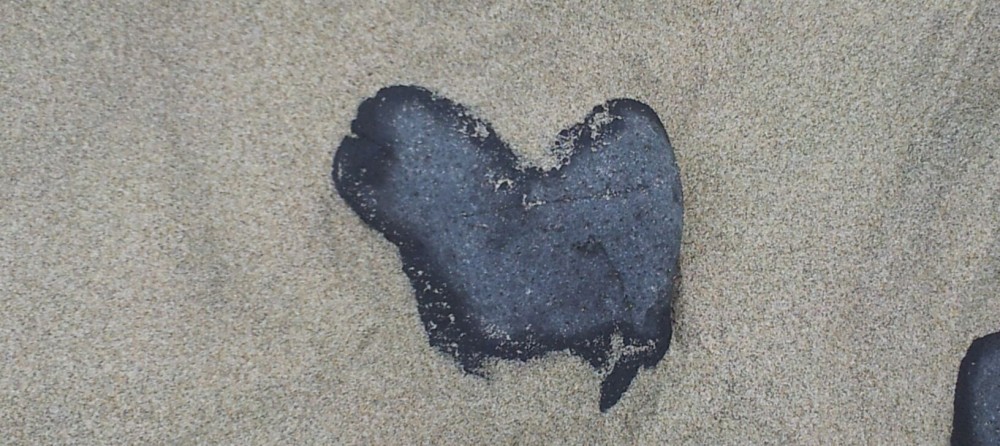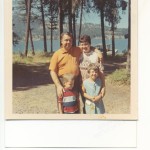“Bang!” “Bang!” “Bang!”
Despite their silence, parents on the playground couldn’t hide their disapproving brows and disturbed looks as my young son pointed a tiny finger and pretended to shoot every child in sight. In those early years, there were times I felt ill equipped as a parent. As my sweet, brown-eyed boy was acting like the most powerful person on the playground, I acted understanding, but felt like a phony.
Here I was, a Montessori teacher, a “peace educator,” and my child loved guns.
Was our household mantra a big mistake? When I recited, “This home is peaceful. We don’t even pretend to play with weapons here. Everyone has the right to be safe,” I didn’t realize it was having the opposite effect: the gunplay didn’t subside. Instead, more docile icons were employed … a carrot stick sword or paintbrush pistol.
I made it my goal to shield him from violent images, closely monitoring the television and following his every move. He played in a carefully prepared environment, rich with sensory activities. The shelves were stocked with puzzles, blocks and art supplies. There were no weapons — not even a pirate ship — yet his fascination with violence continued to grow.
At age 13, my son’s intrigue with weapons was still going strong. He was drawn to games of power and strategy, and the mechanics of machines and weapons.
Retaliation wouldn’t work on a teenager, so I brought my own big guns: shame, guilt and sarcasm. I nagged him constantly and watched a chasm grow between us. He developed a strong love for propulsion and power and left me and my sensitivities in the dust.
The day he talked me into joining him at Airsoft target practice was the turning point. “Mom, guns are just tools. You don’t have to be afraid of them. Shooting at targets isn’t hurting anyone. It’s fun.” Powerless, I played along.
I noted his high marks in proper gun handling. His understanding of gun safety seemed complete and mature, and before I could express concern for the ecosystem bombarded with all those pellets, he assured me they would biodegrade “within a reasonable time frame.”
He had seduced me with reason. I held the gun; it felt all wrong. But one targeted hit was all it took to feel a surge of adrenalin. I peeked self-consciously at the man-child standing beside me grinning ear-to-ear, all too happy to declare, “It feels kind of good when you hit the target, don’t you think, Mom?”
Michael Thompson, Ph.D., author of “Raising Cain,” states: “What we know is that boys in all cultures around the world wrestle more, mock fight more, and are drawn to themes of power and domination, but that’s not the same as hurting someone, so it’s not necessarily a cause for worry.” When parents forbid imaginary play, they inadvertently set up a scenario where children cannot safely express their feelings and impulses.
We strive to see our children as individuals. Yet the shame and guilt we may unwittingly carry forward from our own childhood experiences can be absolutely blinding.
Communication is difficult in the best of circumstances. When children trigger our personal fears, it’s almost impossible to remain open. At times, we may feel embarrassed by our child’s actions; in reality, we’re not ashamed for them, but afraid of what others may think of us. That’s an egocentric life sentence that I’m not willing to adopt.
My fear of guns comes from an unhealed part of me that I was projecting onto my son, one which is easily fueled by the media’s obsession with violence. This same fear cycle plays out around the topic of sex.
In my childhood, discussing sex was simply not done. Having sex was another story. There was a lot of it in my late teenage years — more than I care to admit and much more than I want my son to emulate. My first sexual experience was traumatic, so the idea of discussing birth control with my boy and his girlfriend, age 16, triggered many emotions.
Now 18 and in his first year of college, my son is thoroughly enjoying his independence and his life away from home. Recently, he called to tell me he had ended a relationship. He was upset and really struggling. The conversation that followed was truly remarkable in its openness and candor. I realized we had each come a long way.
What had all those years of parenting and tough communication taught me?
- In his early teenage years, my responses either shut him down or opened up his honesty. I learned fairly early how to allow my son to reveal what was real for him, even when I didn’t agree.
- My son’s natural curiosity triggered my emotions in unexpected — often negative — ways. There was no way to control this.
- When I stopped judging his natural curiosities, I gained respect and could see his broad range of interests.
- Questions that challenged my beliefs sometimes led to heated discussions. These provided the chance for us to find deep connection within the intensity of conflict.
- In speaking up about what was unspeakable in my own youth, I learned that I must hear and accept my son’s unique voice.
The channels of honest communication we’ve been forging ebb and flow with the circumstances of life. We don’t talk every day, but when we do, there is honesty, humor and genuine caring. We have established a foundation of trust, meaning all questions and inquires are welcome.
We disagree often, but we rarely judge each other.
The ways in which any of us show up for, and relate to, each other as adults are inextricably tied to unconscious patterns and attitudes developed in childhood. One delightful result of connecting more deeply with our children is the potential for healing the old and outdated wounds within us.
Communication is a long and winding road, an ongoing process of ripping open wounds that tether us to our past. By freeing ourselves from these past attachments, we can observe and engage openly with the children in whom our own hopes and dreams are so intricately woven.
From our new vantage point, the possibility exists that we may meet and embrace the sweet souls of our own youth and, at long last, make peace with who we were and the people we have become.
~Delila
This article appeared in Portland Family Magazine in February 2014. See more at: http://www.portlandfamily.com/posts/you-can-tell-me-anything/


